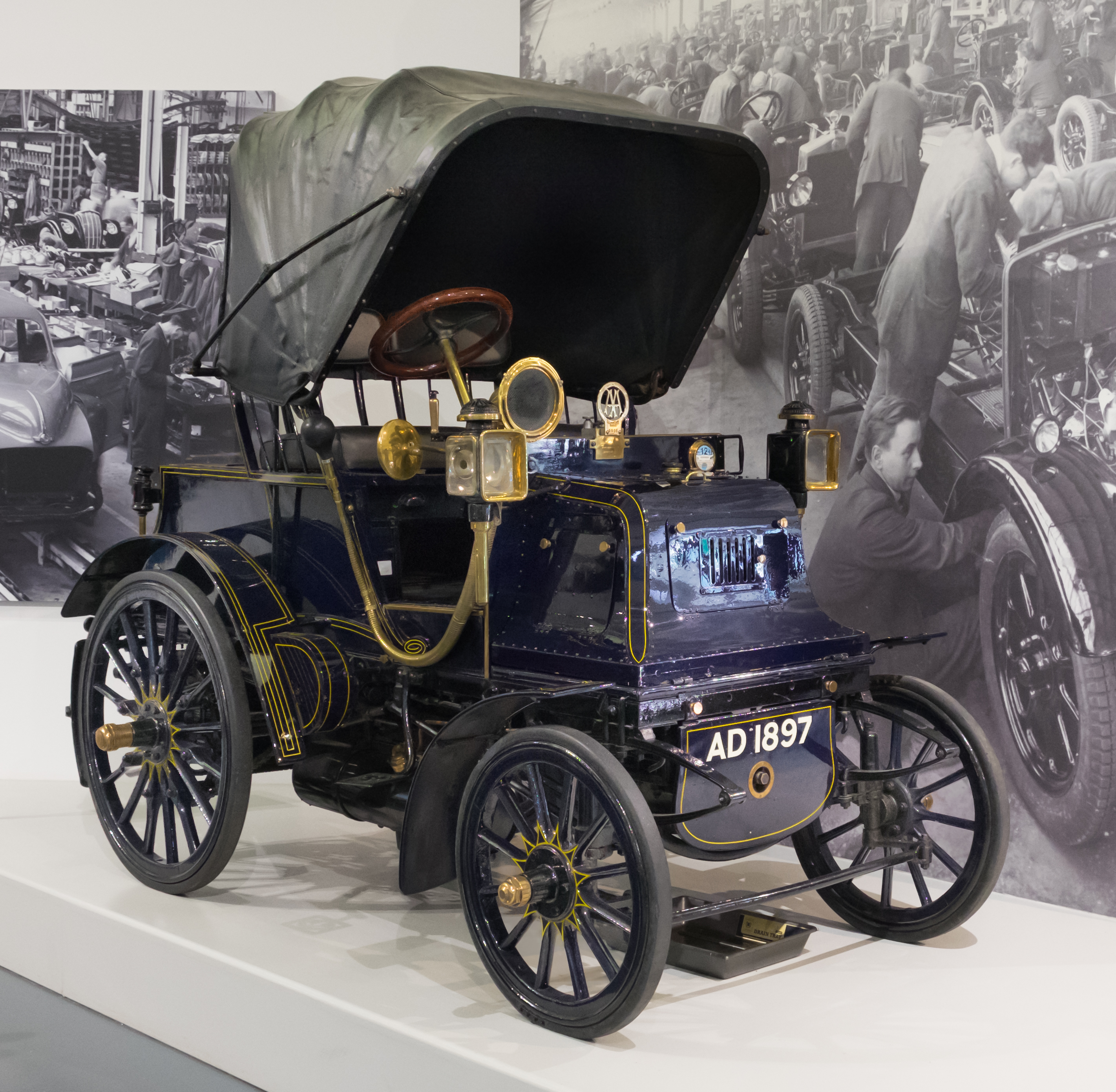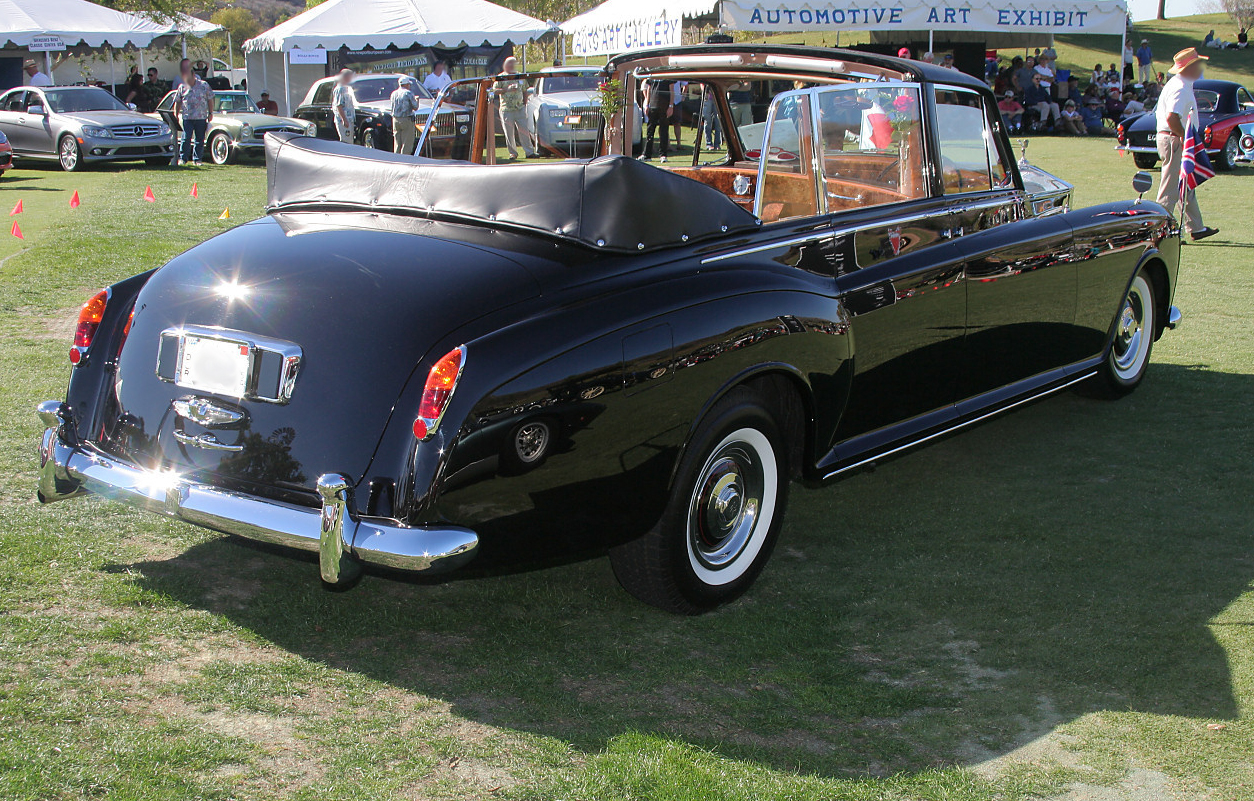|
Lancia Alfa-12HP
The Lancia Alfa 12 HP (Tipo 51 originally) was the first car made by Lancia. The car had originally project name "type 51" and was later renamed to Greek alphabet Alfa. Description The cars first road tests begun in September 1907 and production started in 1908. Vincenzo Lancia unveiled his first car in Turin Motor Show in 1908 (January 18-February 2) . The car was equipped with sidevalve A flathead engine, also known as a sidevalve engine''American Rodder'', 6/94, pp.45 & 93. or valve-in-block engine is an internal combustion engine with its poppet valves contained within the engine block, instead of in the cylinder head, as ... straight-4 engine. The car had top speed of around with 2544 cc engine producing 28 hp and rotating around 1800 revolutions per minute. This model was sold over one hundred copies, car was also made for racing. References *Lancia by Michael Frostick, 1976. Alfa-12HP First car made by manufacturer Cars introduced in 1908 ... [...More Info...] [...Related Items...] OR: [Wikipedia] [Google] [Baidu] |
Lancia
Lancia () is an Italian car manufacturer and a subsidiary of FCA Italy S.p.A., which is currently a Stellantis division. The present legal entity of Lancia was formed in January 2007 when its corporate parent reorganised its businesses, but its history is traced back to ''Lancia & C.'', a manufacturing concern founded in 1906 in Torino by Vincenzo Lancia (1881–1937) and Claudio Fogolin. It became part of Fiat in 1969. The brand is known for its strong rallying heritage, and technical innovations such as the unibody chassis of the 1922 Lambda and the five-speed gearbox introduced in the 1948 Ardea. Despite not competing in the World Rally Championship since 1992, Lancia still holds more Manufacturers' Championships than any other brand. Sales of Lancia-branded vehicles declined from over 300,000 annual units sold in 1990 to less than 100,000 by 2010. After corporate parent Fiat acquired a stake in Chrysler in 2009, the Lancia brand portfolio was modified to include rebadge ... [...More Info...] [...Related Items...] OR: [Wikipedia] [Google] [Baidu] |
Phaeton Body
A phaeton is a style of open automobile without any fixed weather protection, which was popular from the 1900s until the 1930s. It is an automotive equivalent of the horse-drawn fast, lightweight phaeton carriage. A popular style in the US from the mid–1920s and continuing into the first half of the 1930s was the dual cowl phaeton, with a cowl separating the rear passengers from the driver and front passenger. Phaetons fell from favour when closed cars and convertible body styles became widely available during the 1930s. Eventually, the term "phaeton" became so widely and loosely applied that almost any vehicle with two axles and a row or rows of seats across the body could be called a phaeton. Convertibles and pillarless hardtops were sometimes marketed as "phaetons" after actual phaetons were phased out. History The term ''phaeton'' had historically described a light, open four-wheeled carriage. When automobiles arrived it was applied to a light two-seater with minim ... [...More Info...] [...Related Items...] OR: [Wikipedia] [Google] [Baidu] |
Coupe
A coupe or coupé (, ) is a passenger car with a sloping or truncated rear roofline and two doors. The term ''coupé'' was first applied to horse-drawn carriages for two passengers without rear-facing seats. It comes from the French past participle of ''couper'', "cut". __TOC__ Etymology and pronunciation () is based on the past participle of the French verb ("to cut") and thus indicates a car which has been "cut" or made shorter than standard. It was first applied to horse-drawn carriages for two passengers without rear-facing seats. These or ("clipped carriages") were eventually clipped to .. There are two common pronunciations in English: * () – the anglicized version of the French pronunciation of ''coupé''. * () – as a spelling pronunciation when the word is written without an accent. This is the usual pronunciation and spelling in the United States, with the pronunciation entering American vernacular no later than 1936 and featuring in the Beach Boys' hi ... [...More Info...] [...Related Items...] OR: [Wikipedia] [Google] [Baidu] |
Landaulet (car)
A landaulet, also known as a landaulette, is a car body style where the rear passengers are covered by a convertible top. Often the driver is separated from the rear passengers by a division, as with a limousine. During the first half of the 20th century, taxicabs were often landaulets, with models such as the Austin 12/4 and the Checker Model G and early Checker Model A being a common sight in larger cities. Around the middle of the 20th century landaulets were built for public figures such as heads of state to use for formal processions or parades when they wished to be more visible to large crowds. Open cars are now less frequently used, due to security concerns. History The car body style is derived from the horse-drawn carriage of similar style that was a cut-down (coupé) version of a landau. In British English, the term ''landaulet'' is used specifically for horse-drawn carriages, and ''landaulette'' is used when referring to motor vehicles. Like many other car ... [...More Info...] [...Related Items...] OR: [Wikipedia] [Google] [Baidu] |
Limousine
A limousine ( or ), or limo () for short, is a large, chauffeur-driven luxury vehicle with a partition between the driver compartment and the passenger compartment. A very long wheelbase luxury sedan (with more than four doors) driven by a professional driver is called a stretch limousine. In some countries, such as the United States, Germany, Canada, and Australia, a limousine service may be any pre-booked hire car with driver, usually but not always a luxury car. In particular, airport shuttle services are often called limousine services though they often use minibuses. __TOC__ Etymology The word ''limousine'' is derived from the name of the French region Limousin. However, how the name of the region transferred to the car is uncertain. One possibility involves a particular type of carriage hood or roof physically resembled the raised hood of the cloak worn by the shepherds there. An alternate etymology speculates that some early chauffeurs wore a Limousin-style cloa ... [...More Info...] [...Related Items...] OR: [Wikipedia] [Google] [Baidu] |
FR Layout
In automotive design, a FR, or front-engine, rear-wheel-drive layout is one where the Internal combustion engine, engine is Front-engine design, located at the front of the vehicle and rear-wheel-drive, driven wheels are located at the rear via a drive shaft. This was the traditional automobile layout for most of the 20th century. Modern designs commonly use the front-engine, front-wheel-drive layout (FF). It is also used in high-floor Bus, buses and School bus, school buses. Front mid-engine, rear-wheel-drive layout In automotive design, a front mid-engine, rear-wheel-drive layout (FMR) is one that places the internal combustion engine, engine in the front, with the rear wheels of vehicle being driven. In contrast to the front-engine, rear-wheel-drive layout (FR), the engine is pushed back far enough that its center of mass is to the rear of the front axle. This aids in weight distribution and reduces the moment of inertia, improving the vehicle's car handling, handling. The me ... [...More Info...] [...Related Items...] OR: [Wikipedia] [Google] [Baidu] |
Straight-4
A straight-four engine (also called an inline-four) is a four-cylinder piston engine where cylinders are arranged in a line along a common crankshaft. The vast majority of automotive four-cylinder engines use a straight-four layout (with the exceptions of the flat-four engines produced by Subaru and Porsche) and the layout is also very common in motorcycles and other machinery. Therefore the term "four-cylinder engine" is usually synonymous with straight-four engines. When a straight-four engine is installed at an inclined angle (instead of with the cylinders oriented vertically), it is sometimes called a slant-four. Between 2005 and 2008, the proportion of new vehicles sold in the United States with four-cylinder engines rose from 30% to 47%. By the 2020 model year, the share for light-duty vehicles had risen to 59%. Design A four-stroke straight-four engine always has a cylinder on its power stroke, unlike engines with fewer cylinders where there is no power stroke occu ... [...More Info...] [...Related Items...] OR: [Wikipedia] [Google] [Baidu] |
Lancia Beta-15/20HP
The Lancia 15/20HP (Type 54, Beta) is an automobile which was produced by Lancia of Italy Italy ( it, Italia ), officially the Italian Republic, ) or the Republic of Italy, is a country in Southern Europe. It is located in the middle of the Mediterranean Sea, and its territory largely coincides with the homonymous geographical re ... in 1909. The 15/20HP replaced the earlier 12HP-Alfa and 18/24HP Dialfa models. Basically the car was a modernized version of the 12HP with the engine displacement enlarged from 2.5 to 3.1 litres (from 28 hp to 34 hp) and the wheelbase increased from to . 150 examples were manufactured before it was replaced by the Gamma-20HP model (type 55) in 1910. References *Lancia by Michael Frostick, 1976. {{DEFAULTSORT:Lancia Beta-15 20HP Beta-15 20HP Cars introduced in 1909 Brass Era vehicles ... [...More Info...] [...Related Items...] OR: [Wikipedia] [Google] [Baidu] |
Tax Horsepower
The tax horsepower or taxable horsepower was an early system by which taxation rates for automobiles were reckoned in some European countries such as Britain, Belgium, Germany, France and Italy; some US states like Illinois charged license plate purchase and renewal fees for passenger automobiles based on taxable horsepower. The tax horsepower rating was computed not from actual engine power but by a mathematical formula based on cylinder dimensions. At the beginning of the twentieth century, tax power was reasonably close to real power; as the internal combustion engine developed, real power became larger than nominal taxable power by a factor of ten or more. Britain The so-called RAC horsepower rating was devised in 1910 by the RAC at the invitation of the British government. The formula is: : \frac where: : D is the diameter (or bore) of the cylinder in inches, : n is the number of cylinders The formula was calculated from total piston surface area (i.e., "bore" only). The fac ... [...More Info...] [...Related Items...] OR: [Wikipedia] [Google] [Baidu] |
Greek Alphabet
The Greek alphabet has been used to write the Greek language since the late 9th or early 8th century BCE. It is derived from the earlier Phoenician alphabet, and was the earliest known alphabetic script to have distinct letters for vowels as well as consonants. In Archaic Greece, Archaic and early Classical Greece, Classical times, the Greek alphabet existed in Archaic Greek alphabets, many local variants, but, by the end of the 4th century BCE, the Euclidean alphabet, with 24 letters, ordered from alpha to omega, had become standard and it is this version that is still used for Greek writing today. The letter case, uppercase and lowercase forms of the 24 letters are: : , , , , , , , , , , , , , , , , , /ς, , , , , , . The Greek alphabet is the ancestor of the Latin script, Latin and Cyrillic scripts. Like Latin and Cyrillic, Greek originally had only a single form of each letter; it developed the letter case distinction between uppercase and lowercase in parallel with Latin ... [...More Info...] [...Related Items...] OR: [Wikipedia] [Google] [Baidu] |
Vincenzo Lancia
Vincenzo Lancia (24 August 1881 – 15 February 1937) was an Italian racing driver, engineer and founder of Lancia. Vincenzo Lancia was born in the small village of Fobello on 24 August 1881, close to Turin; his family tree starts in Fabello around 1550. He was the youngest of four children (one sister and two brothers), his father being a soup canner who made his money in Argentina before returning to Turin to start his business. From an early age, Vincenzo showed a gift with numbers, and it was intended for him to become a bookkeeper, but developed an interest in machinery and engineering, and was fascinated with the new motor car. He eventually became an apprentice with Giovanni Battista Ceirano, a bicycle importer in Turin, and he was named bookkeeper in the company's brochure in 1898. He was also developing his skills at engineering, design and construction, and developed patience, perseverance and determination. Soon he could tackle most problems single-handedly. Once ... [...More Info...] [...Related Items...] OR: [Wikipedia] [Google] [Baidu] |
Turin Motor Show
The Turin Motor Show ( it, Salone dell'Automobile di Torino) was an auto show held annually in Turin, Italy. The first official show took place between 21 and 24 April 1900, at the Castle of Valentino, becoming a permanent fixture in Turin from 1938 having shared it with Milan and Rome until that time. From 1972, the show was held biannually and in 1984, it moved into Fiat's shuttered Lingotto factory. In 2000, it was announced that the show was to be moved to April, starting in 2002. However, the event was last held in Turin in June 2000, and cancelled from 2002, resulting in the Bologna Motor Show taking over the role of Italy's International Motor Show. From 2015 to 2019, Turin again held a Motor Show, albeit as an open air festival to keep exhibitors' costs down, and provide free access to the public. It is held in the precinct of the Parco del Valentino. Major vehicle introductions 1900s 1902 * Adami Rondini 1904 * Motoruota Garavaglia 1906 * Aquila Italiana Cappa ... [...More Info...] [...Related Items...] OR: [Wikipedia] [Google] [Baidu] |







